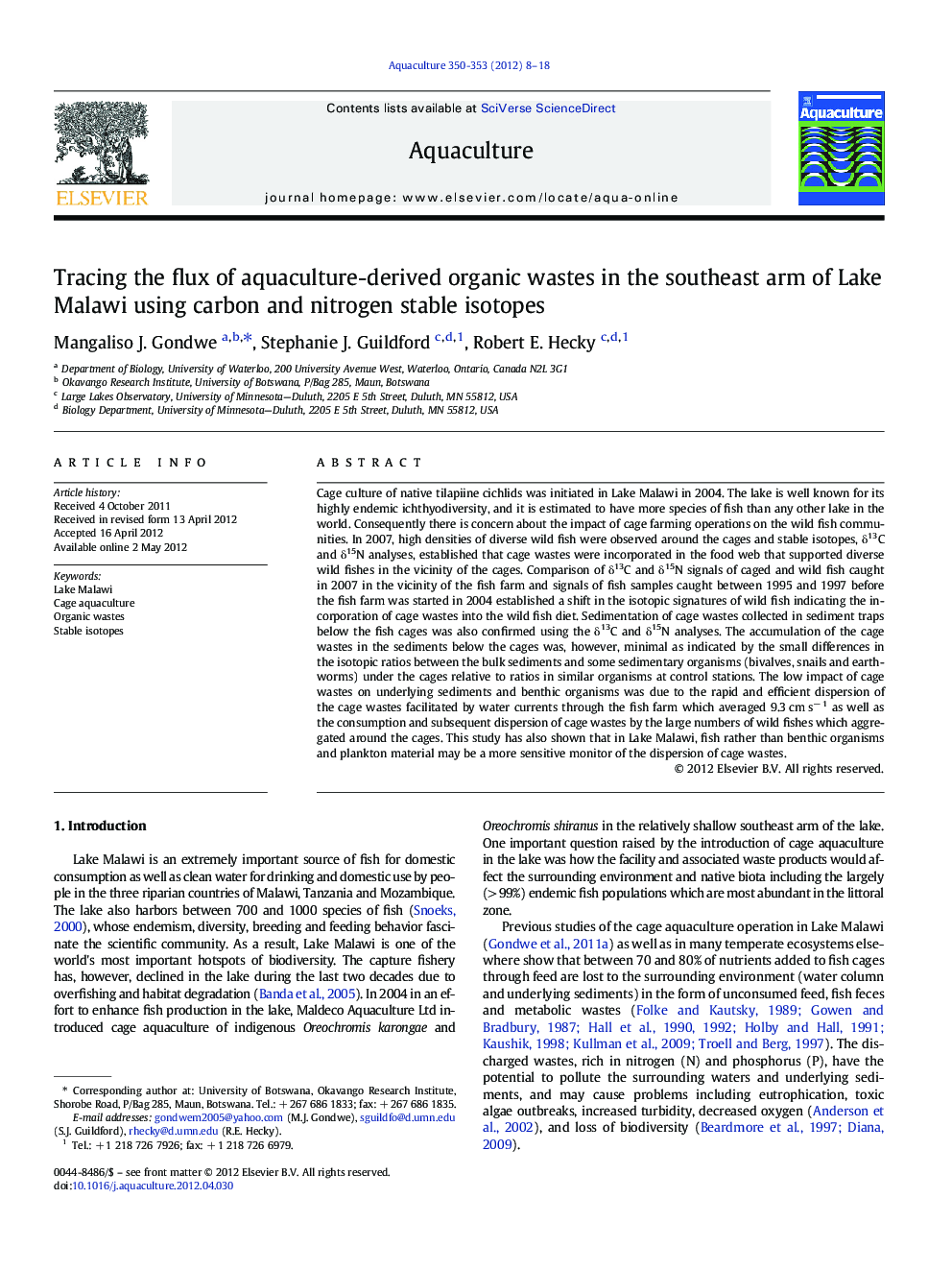| کد مقاله | کد نشریه | سال انتشار | مقاله انگلیسی | نسخه تمام متن |
|---|---|---|---|---|
| 2422446 | 1552890 | 2012 | 11 صفحه PDF | دانلود رایگان |

Cage culture of native tilapiine cichlids was initiated in Lake Malawi in 2004. The lake is well known for its highly endemic ichthyodiversity, and it is estimated to have more species of fish than any other lake in the world. Consequently there is concern about the impact of cage farming operations on the wild fish communities. In 2007, high densities of diverse wild fish were observed around the cages and stable isotopes, δ13C and δ15N analyses, established that cage wastes were incorporated in the food web that supported diverse wild fishes in the vicinity of the cages. Comparison of δ13C and δ15N signals of caged and wild fish caught in 2007 in the vicinity of the fish farm and signals of fish samples caught between 1995 and 1997 before the fish farm was started in 2004 established a shift in the isotopic signatures of wild fish indicating the incorporation of cage wastes into the wild fish diet. Sedimentation of cage wastes collected in sediment traps below the fish cages was also confirmed using the δ13C and δ15N analyses. The accumulation of the cage wastes in the sediments below the cages was, however, minimal as indicated by the small differences in the isotopic ratios between the bulk sediments and some sedimentary organisms (bivalves, snails and earthworms) under the cages relative to ratios in similar organisms at control stations. The low impact of cage wastes on underlying sediments and benthic organisms was due to the rapid and efficient dispersion of the cage wastes facilitated by water currents through the fish farm which averaged 9.3 cm s− 1 as well as the consumption and subsequent dispersion of cage wastes by the large numbers of wild fishes which aggregated around the cages. This study has also shown that in Lake Malawi, fish rather than benthic organisms and plankton material may be a more sensitive monitor of the dispersion of cage wastes.
► Traced the flux of cage organic wastes into the planktonic and benthic food webs.
► Biota near the fish cages exploited the cage wastes as a source of organic C and N.
► Confirmed accumulation of cage wastes on sediments below the fish cages.
► Resident wild fishes may be the best monitors for the cage wastes in Lake Malawi.
Journal: Aquaculture - Volumes 350–353, 20 June 2012, Pages 8–18